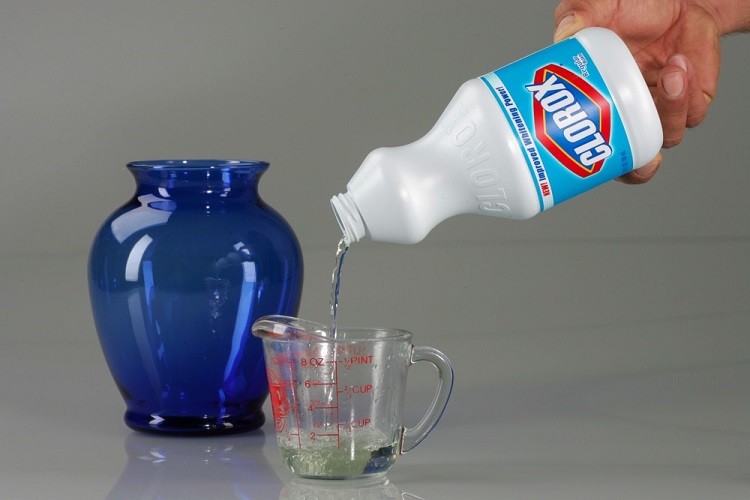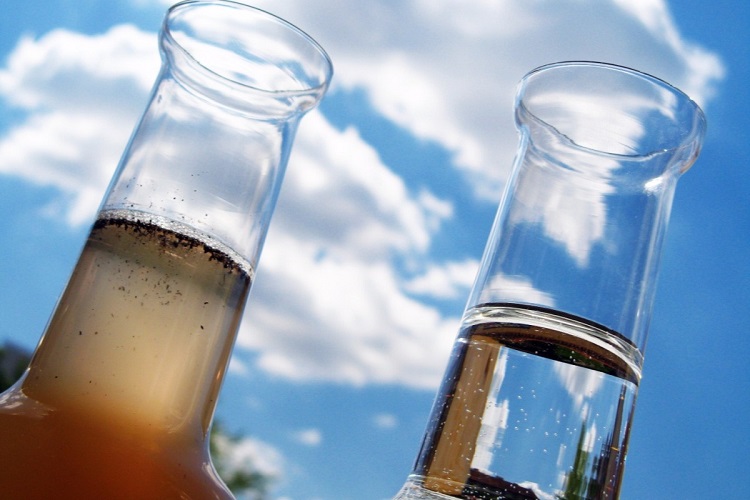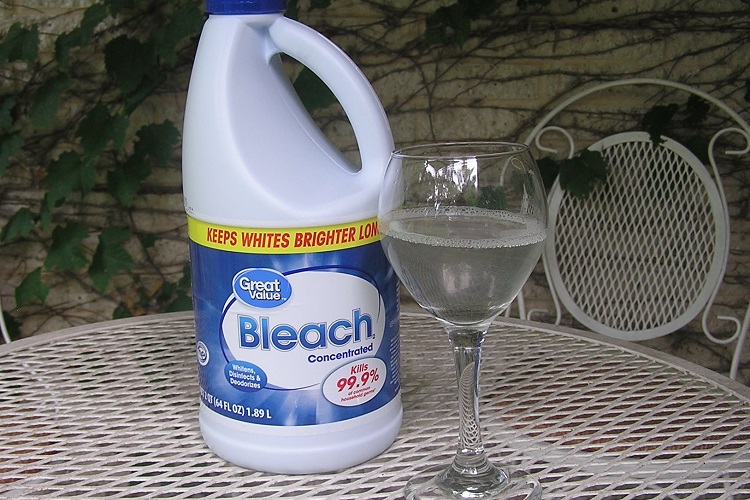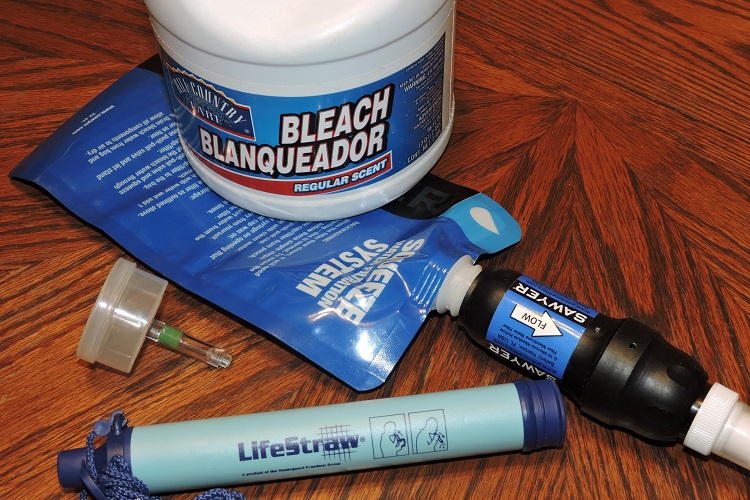Chances are you’ve seen people on survival TV shows or in real life talking about how they purify water with bleach when they’re stuck in the great outdoors and don’t have access to electricity or fire.
You’ve also probably heard that purifying water with bleach can be a lifesaver in emergency situations, but you might not be 100-percent convinced.
Is it safe to purify water with bleach?
The use of bleach is valuable – and can save your life – if you find yourself in a situation where you can’t boil water before drinking it to remove its impurities. However, you can’t just grab any old bleach and splash it into your water.
With that in mind, let’s explore important information you need to know about how to purify water with bleach. This will ensure that you stay hydrated wherever you are and consume water safely.
What Bleach Should You Use To Purify Water?

Regular, unscented chlorine bleach products that are suitable for sanitization and disinfection are the only ones that you should use for purposes of purifying water, so make sure you always read the label on the bottle of bleach.
You might also see that the label mentions that the active ingredient is 6 or 8.25 percent sodium hypochlorite, and that’s okay.
However, there are some types of bleach you should never use to purify water. Avoid color-safe or scented bleach, and any bleach that has added cleaners in it. Similarly, never try to purify water with non-chlorine bleach, bleach tablets, or pool tablets.
The bleach you use also needs to have been stored properly so that it has not degraded in quality. It should be liquid bleach that has been stored at room temperature for less than a year.
How To Purify Water With Bleach

Now that you’re sure you’re using the correct bleach, here are the steps you should follow to purify your water so that it’s safe to drink.
1. Use a clean dropper to add the bleach to your water. Make sure you have one in your emergency supply kit!
2. Choose the right amount of bleach. Here’s a good guide to follow:
| Volume Of Water | Amount of 6% bleach you should add to the water | Amount of 8.25% bleach you should add to the water |
| 1 liter | 2 drops | 2 drops |
| 1 gallon | 8 drops | 6 drops |
| 2 gallons | 16 drops | 12 drops |
| 4 gallons | ⅓ teaspoon | ¼ teaspoon |
| 8 gallons | ⅔ teaspoon | ½ teaspoon |
3. Based on the above, you know now how much bleach to add to your water. However, you need to double the amount of bleach if the water is cold, colored, or cloudy.
4. Once you’ve added the bleach to the water you wish to clean, stir it well and leave it aside for 30 minutes. Smell the water. It should smell a bit like chlorine. If it doesn’t smell like chlorine, you should repeat the same dosage as before and allow the water to stand for 15 more minutes before you drink it.
5. When you taste the water, if it tastes strongly of chlorine, pour the water from one clean container into another. Let it rest for a few hours before you drink it again.
Does Bleach Make Water 100-Percent Pure?
It’s unfortunately a misconception that bleach will purify water completely.
Bleach won’t kill some disease-causing organisms that are found in surface water, nor will it remove chemical pollutants from the water.
However, in an emergency, if adding bleach to the water is the only way to prevent dehydration and stay alive, then it’s still a lot safer than drinking water without disinfecting it first.
What Happens If The Water You Want To Purify Is Very Cloudy?

If you’ve retrieved water for drinking that’s very dirty and cloudy, it might not be enough to use bleach to purify it.
You will need to first filter the water. Now, since you might not have access to electricity, such as because there’s a huge power outage, or you might not be able to make a fire, you might not be able to boil the water first.
A good way to filter water before bleaching it is to use a camping filter. Or, you could use a coffee filter. Here’s how to filter water with a coffee filter prior to bleaching it.
- Start by placing the water you want to filter in a large container.
- Flatten a drip-coffee filter so that it’s in a round shape.
- Fold it once in half. Do that twice so you have a triangular shape.
- Open one flap of the triangle and fit the filter into a funnel.
- You should apply a few drops of water to the filter so that it will properly stick to the funnel.
- Put the funnel into the mouth of an empty water bottle.
- Carefully pour the dirty water from the large container into the bottle via the funnel.
- The filter will collect impurities that are in the water, such as sand and dirt.
- You’ll find that as you continue pouring the water the filtration will slow down. This is because the filter will be getting full of dirt that’s been removed from the water.
- When you can see that the filter can’t do its job anymore, you should replace it with a new, clean filter.
- Once you have completed filtering all the water you need, you can then start the process of bleaching it.
Related Questions
What are the dangers of putting too much bleach in water?
Too much bleach will irritate and harm your digestive system. However, too little won’t be enough to kill bacteria that’s in the water.
What’s a good way to remember offhand how much bleach to put in water?

The general rule that’s easy to remember is 2 drops of bleach per 1 liter of water. You can also think that 2 and 1 gives you 21, which is the legal drinking age in the U.S. “Drinking starts at 21” might be a catchy phrase to help you remember how much bleach to add to water.
Conclusion
If you’re dehydrated and don’t have any way to get your hands on safe drinking water, purifying it with bleach can be the solution you need.
After reading this article, you now know all the important info to ensure you stay safe and hydrated, no matter where you are.
Sources:


[lasso rel="emergency-preparedness-more-a-manual-on-food-storage-and-survival-2nd-edition-revised-and-updated" id="35334"]